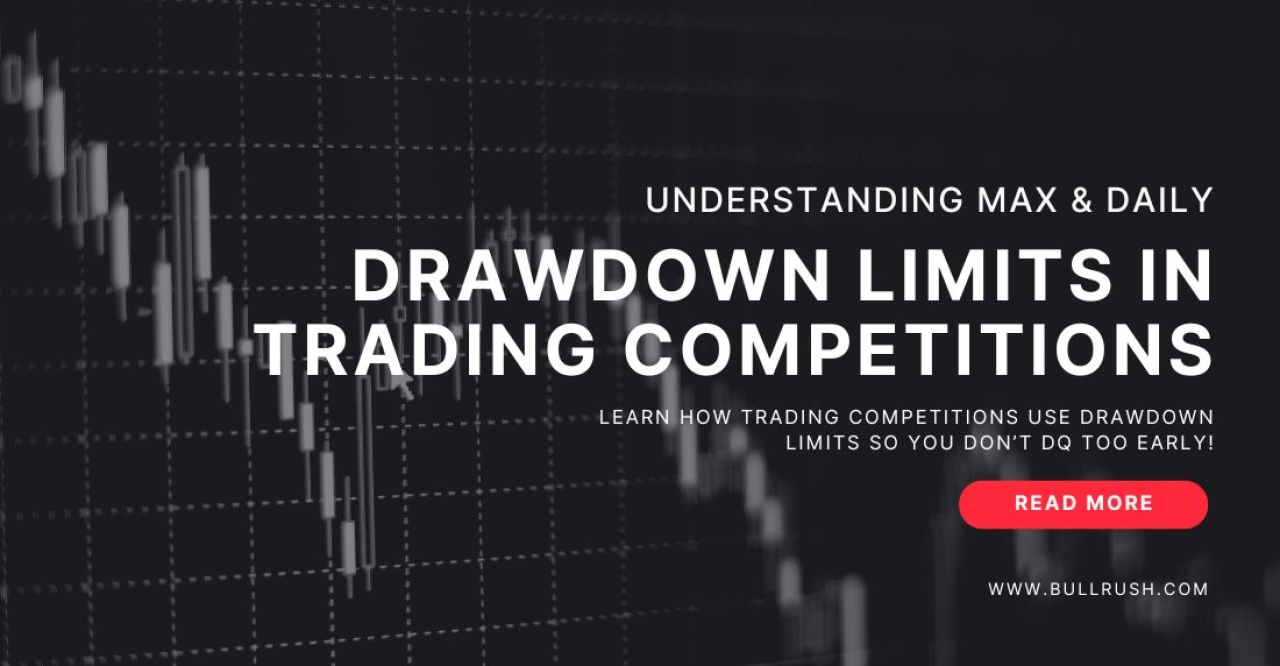
Scalping, Day Trading, or Swing Trading: A Quick Guide
Key Takeaways:
- Know thy trading style: Scalping, day trading, and swing trading require much different-sized blocks of time dedicated to trading, different manners of handling risk, and different approaches. Pick the style that fits you best and your goals for your money.
- Scalping vs. Day Trading vs. Swing Trading: super-high-frequency trades with small profits in scalping, quick and almost snap decisions with fewer trades in day trading, and with longer holding periods, higher gains are potentially involved in swing trading.
- Risk-Free Practice: train, bull-rush scalp, day trade, or swing trade in competitive challenges with no real money lost.
Style Trading Guide: Scalping vs Day Trading vs Swing Trading
Each trader cannot have the same trading style. The best will fall on the type of personality one has, amount of risk one is willing to take, time availability, and what one is trying to accomplish financially. Understanding trading styles helps one to select which of the types will suit them best.
This guide shall walk you through three trading styles: scalping, day trading, and swing trading which best help a trader assess which approach fits his trading preference and style of life.
What is Scalping?
Scalping is an ultra-fast intraday trading strategy whereby traders strive to catch extremely small movements in price within an extremely short period. These people will enter and exit positions within seconds to minutes in an effort to realize myriad small profits during the course of a trading day.
Key Features of Scalping:
- Time Frame: Very short-second to minutes.
- Position Size: Larger to maximize small price movements.
- Leverage: High leverage is extensively used in scalping to multiply the profits that result from very small price movements.
- Risk Management: Because trading is executed at a tremendous speed, it is recommended that scalpers set stop-loss orders very tight, lest they incur huge losses.
- Tools: Various technical techniques and indicators, which help a scalper find entry and exit points for this type of trading include RSI-Relative Strength Index, MACD-Moving Average Convergence Divergence, and VWAP-Volume-Weighted Average Price.
Who is a Scalper? Scalpers are professional, quick decision-makers operating in the high velocity world of trade. Scalping requires:
- Aggressive Risk Management: Since the operations are very frequent, one really has to be very good at managing one’s risk, lest huge losses be incurred.
- High Frequency Trading Awareness: The scalper has to basically understand algorithmic trading and all the dimensions regarding market liquidity to operate effectively.
Scalpers focus on very liquid markets, those that are quite volatile, as such markets provide the necessary price movements for profits in extremely short periods.
What is Day Trading?
Day trading includes both buying and selling within one trading day; however, day traders hold positions for several hours at a time, which is unlike the case with scalping.
Key Features of Day Trading:
- Timeframe: A few hours, but no position is ever carried overnight.
- Position Size: Average, because as a day trader, one would look for a bigger move than a scalp trade would, yet less than that of the swing trader.
- Leverage: Day traders may use leverage, though generally less than scalpers do, which could heighten the possibility of profit.
- Risk Management: Day traders need to balance risk and reward, often using stop-loss orders while staying true to a trading plan.
- Tools: Day traders often combine price action-even candlestick patterns-with technical indicators like MACD, RSI, and moving averages to define trends and potential entry points.
It demands both a patient attitude for waiting for positions and quick decision-making because positions change rapidly within the same trading day.
What is Swing Trading?
The trading approach of the swing is unlike that of scalping and day trading in that it captures the price movements occurring in a few days or even weeks. Comparatively, this is a long time, hence the trader stands a better chance with a position held longer than what was described in the previous strategies.
Key Features of Swing Trading:
- Time Frame: Days or weeks
- Position Size: Normally smaller than day trading owing to the longer holding period.
- Leverage: Swing traders normally use lower leverage.
- Risk Management: Wider stop losses are used to allow for the wider movement in price over the longer period.
- Instrumentario: The basis for the strategy of swing traders, both fundamental – news and economic reports – and technical – chart patterns, Fibonacci retracements, moving averages – analysis, provides trends.
This type of trading will suit those who prefer slower action and are able to invest less time in following the markets continuously.
Scalping vs Day Trading vs Swing Trading: A Comparison
Feature | Scalping | Day Trading | Swing Trading |
Time Frame | Seconds to minutes | Minutes to hours | Days to weeks |
Position Size | Large to capture small moves | Medium, focusing on bigger price changes | Small to medium, long-term trends |
Leverage | High | Moderate to high | Low to moderate |
Number of Trades | Very high (hundreds per day) | Moderate (few trades per day) | Low (fewer trades over longer periods) |
Risk Management | Aggressive risk management with tight stops | Risk-reward balance, strict adherence to plan | Wider stop losses, fundamental analysis |
Tools Used | Technical indicators, high-frequency execution | Indicators, price action, trend analysis | Chart patterns, Fibonacci, news, and events |
Best For | Experienced, fast-paced traders | Active traders with time for research and quick execution | Traders seeking less intensity, preferring a balanced lifestyle |
Pros and Cons of Each Style
Trading Style | Advantages | Disadvantages |
Scalping | – Potential for High Profits: Scalpers can make significant gains in a short period due to high trade frequency. – Capitalizing on Small Movements: Traders profit from small price fluctuations that occur throughout the day. – Exciting and Challenging: The fast-paced nature can be thrilling for traders who enjoy quick decision-making. | – High Risk: The use of high leverage and frequent trades increases the risk of substantial losses. – Intense Focus Required: Scalping demands constant attention and rapid responses to market changes. – Stressful: The fast-paced, high-pressure environment can be emotionally taxing. – High Trading Costs: Frequent transactions result in significant fees and commissions. |
Day Trading | – Intraday Opportunities: Traders can capitalize on price movements within the same trading day. – Less Stressful than Scalping: Positions are held for several hours, reducing the intensity compared to scalping. – Potential for High Profits: With effective strategies, day traders can achieve substantial returns. | – High Risk: Like scalping, day trading involves significant risk due to leverage and rapid trades. – Focus and Quick Decisions Required: Traders must make swift decisions and stay highly focused on market conditions. – Emotional Demands: Constant monitoring of the market can be mentally exhausting. – Trading Costs: Frequent trades lead to high transaction fees and commissions. |
Swing Trading | – Higher Profit Potential: Longer holding periods (days/weeks) provide opportunities for larger gains. – Less Stressful: Fewer trades and longer holding periods make it less demanding on time and emotions. – Flexibility: Traders can adapt to changing market conditions without the need for constant monitoring. – Lower Costs: Fewer trades mean lower transaction fees than scalping or day trading. | – Patience Required: Swing traders need discipline to hold positions for several days or weeks. – Fewer Trades: The lower frequency of trades results in fewer profit opportunities. – Technical Analysis Skills: A solid understanding of technical analysis and market patterns is essential for success. |
Try BullRush for Trading Strategies
BullRush is a gamified trading platform combining, into one ideal place, the testing and trying of different trading strategies, be it as a scalper, day trader, or swing trader. Trading challenges and trading competitions will enable traders to practice their strategy in a competitive, risk-free environment while improving their trading skills.
Why Trade Practice on BullRush?
- Develop Your Scalping Skills: If you want to hone your scalping, swing or day trading skills, BullRush is the place where you should be. You can easily compete with other traders and test your skills in real market conditions without exposing yourself to the risk of actual losses.
- Compete for Real Prizes: One way to win real prizes at BullRush is through trading challenges. Its platform actually rewards talent, discipline, and strategy.
- Improve Your Trading Discipline: The pressure of trading on BullRush’s Challenge Arena helps hone the technical and psychological aspects of trading. Whether honing a scalping technique or testing out a day trading strategy, it provides one unique, motivating environment for growing your skills in trading.
Want to take your trading to the next level? Well, step into the BullRush Challenge Arena today and start trading, competing, and winning amazing prizes while reaping experience of immense value in trading.
Conclusion
Each of the styles has its own set of advantages and disadvantages, and which is best depends upon your goals, risk tolerance, and the time you can devote. Scalping gives the highest profit potential with higher stress and greater risk involved. Day Trading strikes a balance between the frequency and intensity of trades. There is less stress in using the methodology of Swing Trading, and profits may happen over a longer period; it does take some time, though, and requires a good understanding of technical analysis. Knowing this dynamic may be helpful as you choose the right style for you on your journey to trade.



